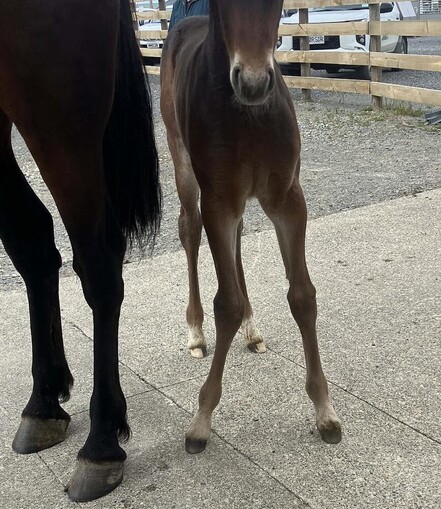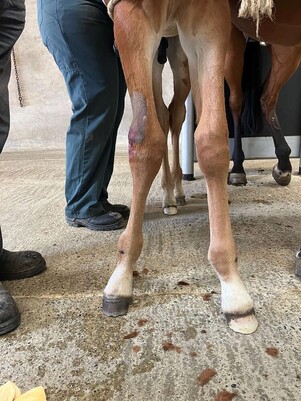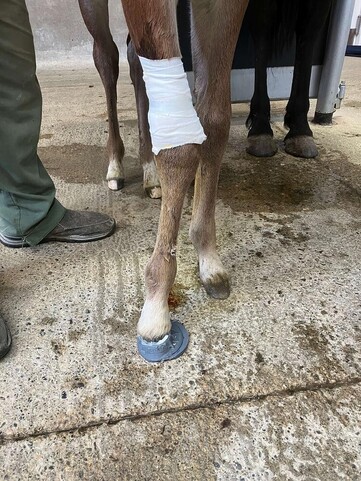Causes and treatment options for foals with limb deformities.
Each year we see several foals born with limb deformities, or ‘bent’ legs. Sometimes, these can be quite a challenge to correct.
Limb deformities come in two types:
Angular limb deformities (bends),
Rotational limb deformities (twists).
The majority of limb deformities are angular (as shown in the photo) and, fortuitously, they are easier to correct than a rotated leg.
*Limb angulation in foals is different to contracture of legs, which is a disorder that causes the tendons to be really tight (e.g. Club Foot).
Causes of angular limb deformities
There are many factors at play in the formation of bent legs. Often, it is not as simple as the way the foal is lying in the uterus.
There may be a genetic component, as some mares can repeatedly produce bent-legged foals.
Growth rate in the last third of pregnancy has also been implicated, possibly indicating over-feeding of the mare, in some instances.
The bones of the legs start out as cartilage templates in the developing foal in the uterus. Cartilage is soft and pliable and, at birth, the legs can be soft and somewhat unstable. Well-developed foals can put a lot of stress on soft legs, leading to bending/angulation.
Development of angulation
Angulation normally occurs at the growth points of the bones (the ends of the long bones); namely the forearm and cannon bones in their front legs and the tibia and cannon bones in their hinds.
Often, angulation may not seem bad at birth but slowly appears to worsen over the next two to three weeks.
Treatment
Treatment varies from case to case, however, the main rule is to start early while the limb is still in its growth phase. This gives time for the limb to effectively ‘grow’ straight.
Trying to correct a limb deformity in a yearling which has passed its rapid growth phase is much harder, as there is little growth remaining.
For angulation, it is important to restrict exercise (box or small yard confinement) and trim their hooves.
Hoof trimming works by tipping the foot and limb above, making the foal's weight push against the direction of the bend.
For a limb bending ‘out’, the outside half of the weight-bearing sole of the foot is trimmed off. For a limb bending ‘in’, the inside half of the hoof should be trimmed.
Another form of treatment is using small glue on shoes with an inside or outside extension. The extension acts to support the side of the limb under compression and shift the centre of gravity of the limb back to the middle. Note the foal in the photo with an extension on the inside to stabilise a bend outward.



